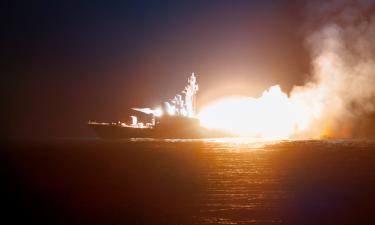Police say they stopped terror suspects near Sydney nuclear reactor
Police believe a nuclear reactor in southern Sydney was a possible target of a Sydney-based Islamic terror cell, according to details of Australia's biggest-ever counterterror investigation released Monday.
Police previously stopped and questioned three recently arrested Sydney terror suspects near Australia's only nuclear reactor in December last year, according to an alarming outline of police allegations.
The document, submitted to Sydney's Central Local Court on Monday, outlined the allegations against eight terror suspects who were arrested last week and charged with planning a terrorist attack.
Under the heading "Possible targets for terrorist attack," the police document said Mazen Touma, Mohammed Elomar and Abdul Rakib Hasan were stopped in a car by New South Wales state police near the nuclear facility at Lucas Heights, in southern Sydney, in December 2004.
The men had an off-road motorbike and told police they were in the semi-rural area to ride it, the document said.
When interviewed separately, however, all three men gave different versions of the day's events, the document said.
After investigating the area, police found that the lock on one of the gates surrounding the nuclear complex "had recently been cut," the police document said.
New South Wales state Premier Maurice Iemma sought Monday to reassure the public that the reactor was safe.
"Lucas Heights is a Commonwealth facility but we have extensive plans in critical infrastructure protection which form part of our counterterrorism plans," he told reporters.
Touma, Elomar and Hasan were arrested along with 15 other suspects in Sydney and the southern city of Melbourne last week. Police allege they were part of an Australian-based terror network that was plotting to carry out a "catastrophic" attack.
The eight Sydney men have been charged with conspiring to manufacture explosives in preparation for a terrorist act, and the 10 Melbourne men are accused of being members of a terrorist organization.
All 18 suspects face a maximum of life imprisonment if convicted.
The police fact sheet outlines the prosecution's case against each of the eight Sydney suspects.
It said members of the group "have sourced or attempted to source materials (primarily sulfuric acid, acetone and peroxide) for the production of peroxide-based explosives."
During a search of Elomar's home on June 27, police said they found a computer memory stick which contained instructions in Arabic for making TATP, or triacetone triperoxide, a highly unstable explosive made from commercially available chemicals such as hydrochloric and sulfuric acids, brake fluid and hydrogen peroxide.
Australian police have said TATP is similar to the bombs used by suicide bombers the July 7 attacks on London's public transport system, but British authorities have refused to confirm those reports.
Police said that on Sept. 29, one of the eight Sydney suspects and "a known associate" placed an order under the name George for 200 liters (53 gallons) of ethyl alcohol, 50 liters (13 gallons) of hydrochloric acid, 25 kilograms (55 pounds) of citric acid and 20 liters (5.28 gallons) of glycerin _ all potential bomb making ingredients.
The statement said some of the men had attended a terrorist training camp at a rural property in a remote area of New South Wales state, and "obtained extremist advice and guidance" from a firebrand cleric, Abu Bakr, who made headlines last year by calling Osama bin Laden a "great man."
According to the document, on Feb. 23, Hasan and another suspect, Khaled Sharrouf, and another unidentified man visited Abu Bakr in Melbourne.
During the meeting, police said that Sharrouf stated: "I want to die" and Abu Bakr replied: "If we want to die for jihad then we have to have maximum damage, maximum damage, damage their buildings, everything, damage their lives. To show them. In this we'll have to be careful.", AP reported. V.A.
Subscribe to Pravda.Ru Telegram channel, Facebook, RSS!





